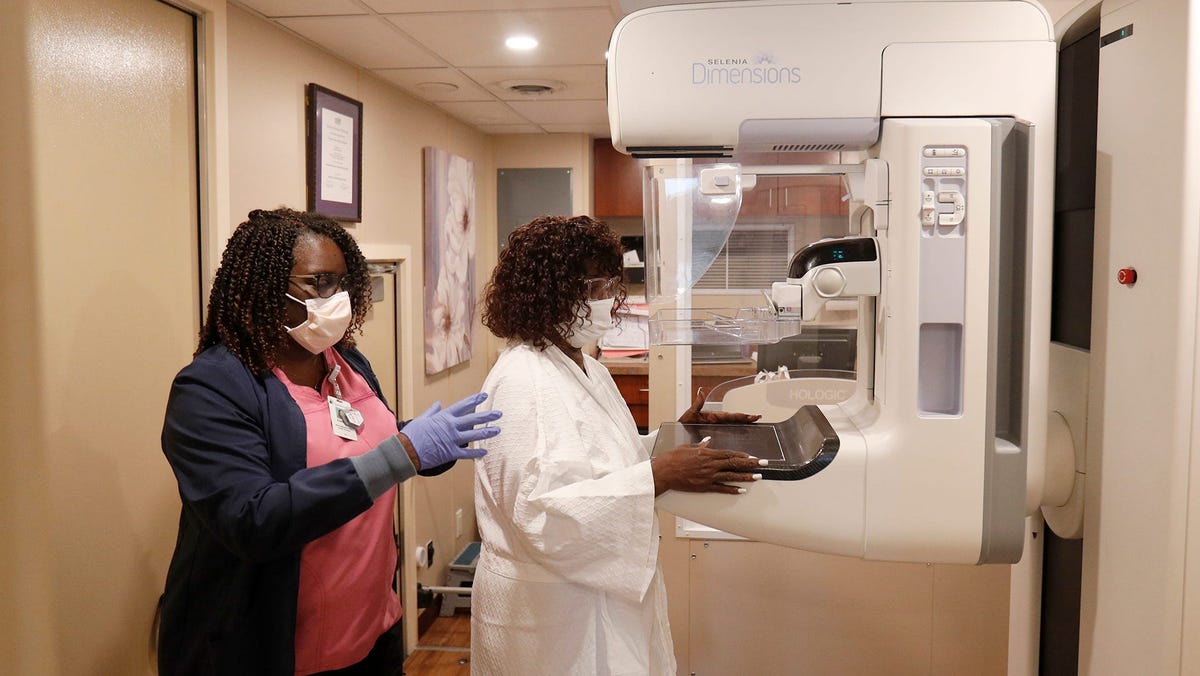Uterine cancer cases rise in women
Cases of uterine cancer are on the rise, and it can be seen more in black women than in white women.
Fox – 13 News
A cancer diagnosis is terrifying for anyone, but Black women have an extra reason to be afraid. Although Black women have a slightly lower risk of developing cancer, once they’ve been diagnosed they are more likely to die and die faster than non-Black women.
“We always say cancer affects everyone, but it doesn’t affect everyone equally,” said Alpa Patel, a senior vice president at the American Cancer Society.
To understand why, the American Cancer Society Tuesday is launching the largest-ever study of cancer risk and outcomes in Black women.
The Society, which has run other large, long-term studies over the last 70 years, aims to enroll more than 100,000 Black women between the ages of 25 and 55 who are cancer-free and follow them over three decades. They are focusing enrollment in 20 states and the District of Columbia – areas where the majority of Black American women live.
Previous long-term studies by the Cancer Society solidified the link between smoking and lung cancer, tied obesity to a variety of health problems and showed that regular aspirin use can reduce the risk of colon cancer. So organizers are hopeful that 30 years of data on Black women will reveal important insights.
“This study has so much potential to change what cancer means to generations of Black women,” said Patel, an expert in population science.
The ACS chose to launch the study because the COVID-19 pandemic highlighted health disparities by race and because over the last decade, Black women have become more interested in health issues, said Lauren McCullough, co-principle investigator of the study.
“We’re trying to engage a community that is already activated and really wants this opportunity to understand why they have disproportionate rates of cancers and other diseases,” she said in a Monday call with reporters.
Participants will be asked to fill out an initial questionnaire, that takes about 15 minutes, followed by an hourlong, more detailed questionnaire about their lives and family histories, and their mental and emotional health, McCullough said.
Then, there will be a 30-minute online follow-up survey every six months for the next 30 years.
Anyone is eligible to participate as long as they identify as Black, were assigned female at birth or self-identify as a woman, don’t have a history of cancer (except basal or squamous skin cancer), are between 25 and 55 and live in Alabama, California, Florida, Georgia, Illinois, Louisiana, Maryland, Massachusetts, Michigan, Mississippi, Missouri, New Jersey, New York, North Carolina, Ohio, Pennsylvania, South Carolina, Tennessee, Texas, Virginia or Washington, D.C.
More information about the Voices of Black Women study and how to participate is available at voices.cancer.org.
Patel said the answers will begin coming once large numbers of Black women join the study.
“The faster we get to 100,000, the faster we get to the first wave of answers,” Patel said. Participant information will be de-identified and the Cancer Society has been careful to center Black women in developing the study to help build relationships with participants and combat historic mistrust, she said.
Overall, about 10% of all breast cancer falls into the most aggressive category, called triple-negative, because it lacks receptors for any hormones. Among Black women, however, 20% of breast cancers are in this category, but it’s not clear whether that’s because of genetics, environment, diet, the stress of enduring racism, or some other factor.
“This is something we really need to be able to learn to find successful ways to intervene,” Patel said.
Black women also experience higher rates of colon and endometrial cancer and at earlier ages. The study will collect tumor samples if a study participant is diagnosed with cancer.
“We’re at a point in time where we have to say we can’t keep talking about it, we have to solve it,” she said.
Updated guidelines: Task force says this is when women should begin breast cancer screening, get mammograms
In an unrelated study published May 4, researchers at the Dana-Farber Cancer Institute found that their peers had been too focused on identifying racial disparities rather than investing in efforts to reverse them.
Cancer deaths have fallen substantially over the last three decades, the study noted, but those benefits have not been spread equally.
Most of the federal funds available for addressing disparities have been spent on public education and research rather than on efforts to reduce differences in care, the study found.
“What is the use of developing new therapies if the communities that could benefit the most are the very ones that cannot access them?” study author Dr. Christopher Lathan, Dana-Farber’s associate chief medical officer said in a statement.
To try to reduce racial and socioeconomic health disparities in cancer diagnoses, real estate developer Bruce Ratner announced Monday he would help fund increased lung and breast cancer screening across New York.
The Ratner Early Detection Initiative will invest in better early detection tools, patient navigation and practices to increase screenings in underresourced areas, in collaboration with Memorial Sloan Kettering Cancer Center and MediSys Health Network, which includes Jamaica Hospital Medical Center and Flushing Hospital Medical Center.
Ratner, who co-wrote a new book “Early Detection: Catching Cancer When It’s Curable” with science writer Adam Bonislawski, has been interested in the early detection of cancer since his brother Michael Ratner died of the disease in 2016.
Karen Weintraub can be reached at kweintraub@.com.
